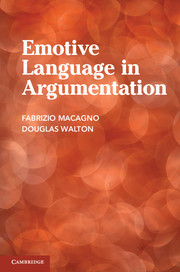6 - Dialogues and Commitments
Published online by Cambridge University Press: 05 June 2014
Summary
The previous chapters have given plenty of good reasons to be suspicious about the use of persuasive definitions and emotive language in argumentation, and to often see them, especially when examining discourse from a logical point of view, as suspicious, or even as inherently illegitimate moves. But is it possible that rational persuasion can be shown to be a legitimate aim of argumentation by providing some kind of objective framework in which there are rules for proper persuasion? Is there a procedural setting in which a persuasion attempt could be an appropriate speech act properly employed so that, under the right conditions, it could be a legitimate move in rational argumentation? In this chapter we show how we need to study how definitions and arguments containing loaded terms are put forth as part of a sequence of argumentation in a dialogue exchange. The move made in a dialogue where a party puts forward an argument, or where a party puts forward a definition that she wants the other party to accept, needs to be seen as a kind of speech act that can only be properly understood in a rule-governed dialogue setting, we will argue.
Although there can be different kinds of dialogues, the principal model for evaluating argumentation in cases of the use of emotively loaded language and persuasive definitions is that of the persuasion dialogue, a formal structure with moves and rules, and in which the aim of each participant is rational persuasion based on the values, commitments, and knowledge of the other party. As shown by a thematic example in the chapter, this model enables an analyst to systematically analyze arguments based on persuasive definitions and emotive terms in order to distinguish between cases where such arguments are reasonable and in cases where they are used as fallacious tactics to try to get the best of a speech partner unfairly.
- Type
- Chapter
- Information
- Emotive Language in Argumentation , pp. 207 - 242Publisher: Cambridge University PressPrint publication year: 2014



